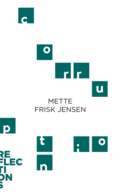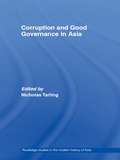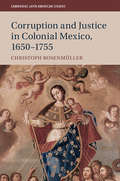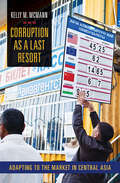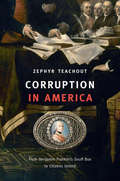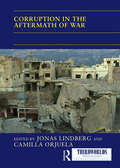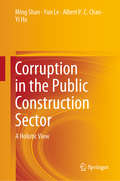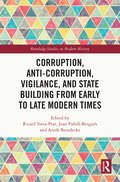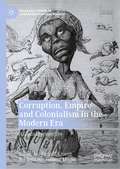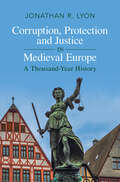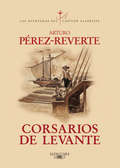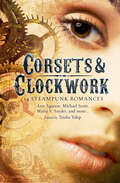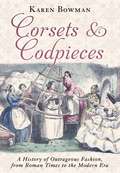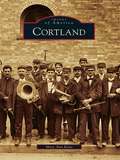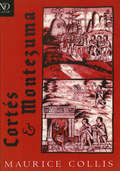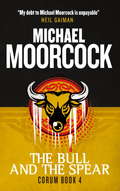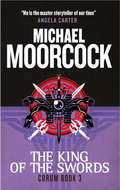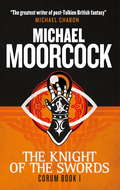- Table View
- List View
Corruption (Reflections)
by Mette Frisk JensenA short but engaging look at what makes Denmark one of the least corrupt countries in the world.Corruption is a profoundly destructive force around the world, but why does its extent vary so drastically among countries? In Corruption, Mette Frisk Jensen closely links the level of corruption in a country to its wealth, the happiness of its citizens, and the level of trust citizens have in their government. Covering the shifting concept of corruption from ancient Greece to modern-day cases, Frisk Jensen discusses why corruption has historically been low in Denmark in particular. She outlines how transparency, meritocratic recruitment, bureaucratic autonomy, high standards of accountability, and impartial legal institutions have been used to combat corruption and what lessons can be learned from these policies.ReflectionsIn Reflections, a series copublished with Denmark's Aarhus University Press, scholars deliver 60-page reflections on a key concept that encapsulates their years of study and research. These books present unique insights on a wide range of topics and concepts—everything from love, trust, and play, to corruption, welfare, and sleep—that entertain and enlighten readers with exciting discoveries and new perspectives.
Corruption and Good Governance in Asia (Routledge Studies in the Modern History of Asia #Vol. 30)
by Nicholas TarlingBringing together contributions on the nature of corruption in East and Southeast Asia, this edited volume examines the means of limiting and ultimately eliminating corruption at a national and international level. Taking a country by country approach the text explores: the concept of corruption, now and in the past recent experiences of Asian countries at the macro- and micro-levels practical local and international measures to constrain corruption. The volume outlines key principles of good governance and the policies and practices essential for their application. As such, it represents an extremely valuable contribution to our understanding of corruption and how to tackle the problem.
Corruption and Justice in Colonial Mexico, 1650–1755 (Cambridge Latin American Studies #113)
by Christoph RosenmüllerCorruption is one of the most prominent issues in Latin American news cycles, with charges deciding the recent elections in Mexico, Brazil, and Guatemala. Despite the urgency of the matter, few recent historical studies on the topic exist, especially on Mexico. For this reason, Christoph Rosenmüller explores the enigma of historical corruption. By drawing upon thorough archival research and a multi-lingual collection of printed primary sources and secondary literature, Rosenmüller demonstrates how corruption in the past differed markedly from today. Corruption in Mexico's colonial period connoted the obstruction of justice; judges, for example, tortured prisoners to extract cash or accepted bribes to alter judicial verdicts. In addition, the concept evolved over time to include several forms of self-advantage in the bureaucracy. Rosenmüller embeds this important shift from judicial to administrative corruption within the changing Atlantic World, while also providing insightful perspectives from the lower social echelons of colonial Mexico.
Corruption as a Last Resort: Adapting to the Market in Central Asia
by Kelly M. McmannWhy do ordinary people engage in corruption? Kelly M. McMann contends that bureaucrats, poverty, and culture do not force individuals in Central Asia to pay bribes, use connections, or sell political support. Rather, corruption is a last resort when relatives, groups in society, the market, and formal government programs cannot provide essential goods and services. Using evidence from her long-term research in Kazakhstan and Kyrgyzstan, McMann shows that Islamic institutions, secular charities, entrepreneurs, and banks cannot provide the jobs and credit people need. This drives individuals to illicitly seek employment and loans from government officials. A leading cause of this resource scarcity is market reform, as demonstrated by McMann's analysis of these countries as well as of Uzbekistan and global data. Market reform without supporting institutions, such as credit registries and antimonopoly measures, limits the resources available from the market and societal groups. McMann finds that in these circumstances only those individuals who have affluent relatives have an alternative to corruption.By focusing on ordinary people, McMann offers a new understanding of corruption. Previously, our knowledge was largely restricted to government officials’ role in illicit exchanges. From her novel approach comes a useful policy insight: supplying ordinary people with alternatives to corruption is a fundamental and important anticorruption strategy.
Corruption in America: From Benjamin Franklin's Snuff Box to Citizens United
by Zephyr TeachoutWhen Louis XVI presented Benjamin Franklin with a snuff box encrusted with diamonds and inset with the King's portrait, the gift troubled Americans: it threatened to "corrupt" Franklin by clouding his judgment or altering his attitude toward the French in subtle psychological ways. This broad understanding of political corruption-rooted in ideals of civic virtue-was a driving force at the Constitutional Convention. For two centuries the framers' ideas about corruption flourished in the courts, even in the absence of clear rules governing voters, civil officers, and elected officials. Should a law that was passed by a state legislature be overturned because half of its members were bribed? What kinds of lobbying activity were corrupt, and what kinds were legal? When does an implicit promise count as bribery? In the 1970s the U. S. Supreme Court began to narrow the definition of corruption, and the meaning has since changed dramatically. No case makes that clearer than Citizens United. In 2010, one of the most consequential Court decisions in American political history gave wealthy corporations the right to spend unlimited money to influence elections. Justice Anthony Kennedy's majority opinion treated corruption as nothing more than explicit bribery, a narrow conception later echoed by Chief Justice Roberts in deciding McCutcheon v. FEC in 2014. With unlimited spending transforming American politics for the worse, warns Zephyr Teachout, Citizens United and McCutcheon were not just bad law but bad history. If the American experiment in self-government is to have a future, then we must revive the traditional meaning of corruption and embrace an old ideal.
Corruption in Cuba: Castro and Beyond
by Sergio Díaz-Briquets Pérez-López JorgeEven though combating corruption cannot be the central aim of post-Castro policy, Sergio Díaz-Briquets and Jorge Pérez-López suggest that, without a strong plan to thwart it, corruption will undermine the new economy, erode support for the new government, and encourage organized crime. In short, unless measures are taken to stem corruption, the new Cuba could be as messy as the old Cuba.
Corruption in Urban Politics and Society, Britain 1780–1950 (Historical Urban Studies Series)
by John SmithDespite much recent interest in the area of urban governance, little work has been done on the changing ethical standards of urban leaderships, 'governing' institutions or the policing of public life. Yet the issue of ethical standards in public life has become a central concern in contemporary public discourse; with issues of public probity, moral order and personal standards re-emerging as central features of political debate. This volume places these debates into their historical perspective by examining the linkages between processes of 'modernisation', urbanisation and the ethical standards of governance and public life. It considers how ethical debates arise as a result of differential access to positions of authority and from competition for public resources. The contributions are drawn from a wide range of scholarly and disciplinary backgrounds and provide a broad analysis of the phenomenon of corruption, assessing how debates about corruption arose, the narratives used to criticise established modes of public conduct and their consequences for urban leadership.
Corruption in the Aftermath of War (ISSN)
by Jonas Lindberg and Camilla OrjuelaCorruption is a serious concern, one which can undermine state legitimacy, exacerbate inequality, and affect trust between social groups. Such effects are particularly problematic in societies that have gone through violent conflict, and are struggling to rebuild institutions, restore social trust, and recover economically. While anti-corruption measures are increasingly integrated into post-conflict programs, war-time structures and practices of corruption often prevail. This book explores corruption in post-war societies by focusing on the important issues of power, inequality and trust. To understand post-war power structures, and the extent to which they engrain, challenge, or transform corrupt practices, we need to study what kind of peace has emerged. The empirical cases in this book offer a variety of post-conflict situations, demonstrating how corruption is played out in, depending on the type and extent of international intervention, and in the case of a victor’s peace, a contested peace, a partial peace etc. The chapters illustrate the experiences and perceptions of people on the ground in post-conflict societies, and by giving much space to local dynamics, the book shifts the focus from external intervention and actors to local contexts, striving for greater understanding of the interplay between corruption, power, inequality, and trust in post-war societies. This book was originally published as a special issue of Third World Quarterly.
Corruption in the Public Construction Sector: A Holistic View
by Yi Hu Ming Shan Yun Le Albert P.C. ChanThis book is committed to provide a holistic view of corruption in the public construction sector, a sector that has been perceived as the most corrupt in the world. Relying on the new findings achieved from a series of qualitative and quantitative studies, this book unveils the specific forms of corruption, the principal causes of corruption, and the prevailing anti-corruption strategies that are used by the current practice. Furthermore, this book provides two metrics that can assess the potential of corruption and the risk of collusion in given public construction projects, respectively. This book will enhance industry and research communities’ understandings of corruption in the public construction sector. It is also informative to policy-makers and can help them come up with some more effective strategies to eliminate corruption in the public construction sector.
Corruption, Anti-Corruption, Vigilance, and State Building from Early to Late Modern Times (Routledge Studies in Modern History)
by Ricard Torra-Prat Joan Pubill-Brugués Arndt BrendeckeCorruption, Anti-Corruption, Vigilance, and State Building from Early to Late Modern Times challenges current historiographical approaches, proposing new interpretations to rethink the relation between corruption and the socio-political and economic transformations since early globalisation.By adopting both transnational and long-term approaches, the book explores the historical dimension of notions such as accountability, transparency, and vigilance in their immediate political, social, and legal contexts. The starting point is to view corruption not as a moral category that emerged in 1789 to delegitimise past, foreign or present state systems, but as a constantly contested concept that must also be historicised in past societies. The collection revisits chronologies and examines different local, regional, and national frames, highlighting that the path to modernity was contested and affected by a variety of unique circumstances, such as revolutions and external political powers.Building on the latest research and offering new methods of inquiry, this book is a compelling resource for academics interested in political history and the history of corruption.
Corruption, Empire and Colonialism in the Modern Era: A Global Perspective (Palgrave Studies in Comparative Global History)
by Ronald Kroeze Pol Dalmau Frédéric MonierAnswering the calls made to overcome methodological nationalism, this volume is the first examination of the links between corruption and imperial rule in the modern world. It does so through a set of original studies that examine the multi-layered nature of corruption in four different empires (Great Britain, Spain, the Netherlands and France) and their possessions in Asia, the Caribbean, Latin America and Africa. It offers a key read for scholars interested in the fields of corruption, colonialism/empire and global history.The chapters ‘Introduction: Corruption, Empire and Colonialism in the Modern Era: Towards a Global Perspective’, ‘“Corrupt and rapacious”: Colonial Spanish-American past through the eyes of early nineteenth century contemporaries. A contribution from the history of emotions’, and ‘Colonial Normativity? Corruption in the Dutch-Indonesian Relationship in the Nineteenth and Early-Twentieth Centuries’ are Open Access under a CC BY 4.0 license at link.springer.com.
Corruption, Protection and Justice in Medieval Europe: A Thousand-Year History
by Jonathan R. LyonWhat was an “advocate” (Latin: advocatus; German: Vogt) in the Middle Ages? What responsibilities came with the position and how did they change over time? With this groundbreaking study, Jonathan R. Lyon challenges the standard narrative of a “medieval” Europe of feudalism and lordship being replaced by a “modern” Europe of government, bureaucracy and the state. By focusing on the position of advocate, he argues for continuity in corrupt practices of justice and protection between 750 and 1800. This book traces the development of the role of church advocate from the Carolingian period onward and explains why this position became associated with the violent abuse of power on churches' estates. When other types of advocates became common in and around Germany after 1250, including territorial and urban advocates, they were not officeholders in developing bureaucracies. Instead, they used similar practices to church advocates to profit illicitly from their positions, which calls into question scholarly arguments about the decline of violent lordship and the rise of governmental accountability in European history.
Corsair
by Barrett TillmanThis is the remarkable story of an airplane that became a legend--with a sleek silhouette and bent wings, it doubled as a day and night fighter, could fly off carriers or from land, and served both as a dive bomber and reconnaissance plane. Filled with facts and figures, this fast-paced history begins with the nerve-wracking test flights of the 1940s and concludes with the F4Us that were active thirty-eight years later. Placed skillfully in between are the stories that gave birth to the legend: the exploits of the aces, including the Medal of Honor recipient who shot down twenty-five enemy planes, and the details of the combat missions of Charles A. Lindbergh. During thirty months of combat in World War II with the U.S. Navy and Marines, the Corsair shot down more than two thousand Japanese planes. In Korea the U-bird, as it was called, was credited with ten aerial victories.A trip down memory lane for anyone who has followed the career of this Cadillac of the props, this new paperback edition of a book first published in hardcover in 1979 offers fine historical aviation reading that presents a riveting picture of the men and machine that helped win two wars.
Corsairs To Panthers: U.S. Marine Aviation In Korea [Illustrated Edition] (Marines In The Korean War Commemorative Series #1)
by Major-General John P. Condon USMC Commander Peter B. Mersky USNIncludes over 30 photos, maps and plans.The first major surprise of the post-World War II years came into play when in late June 1950, the United States found itself responding in crisis fashion to the North Korean invasion of the new republic of South Korea, just four years and nine months after VJ-Day. The nation became involved in Korea as a result of the Cairo and Yalta conferences in which the United States and the Soviet Union agreed to the concept of a free and independent post-war Korea.This is the story of the Marines who took to the sky above Korea, fulfilling many different missions including interdiction, night interception, close air support and tank busting. This memorial volume, richly illustrated, is a fitting monument to their courage and service.
Corsarios de Levante (Las aventuras del capitán Alatriste #Volumen 6)
by Arturo Pérez-ReverteEn esta sexta entrega de «Las aventuras del capitán Alatriste» la acción transcurre de las costas de Berbería a las bocas de Constantinopla: desembarcos, saqueos, abordajes, corsarios, piratas y esclavos, cuando el Mediterráneo era un mar español. «Durante casi dos años serví con el capitán Alatriste en las galeras de Nápoles. Por eso hablaré ahora de escaramuzas, corsarios, abordajes, matanzas y saqueos. Así conocerán vuestras mercedes el modo en que el nombre de mi patria era respetado, temido y odiado también en los mares de Levante. Contaré que el diablo no tiene color, ni nación, ni bandera; y cómo, para crear el infierno en el mar o en la tierra, no eran menester más que un español y el filo de una espada. En eso, como en casi todo, mejor nos habría ido haciendo lo que otros, más atentos a la prosperidad que a la reputación, abriéndonos al mundo que habíamos descubierto y ensanchado, en vez de enrocarnos en las sotanas de los confesores reales, los privilegios de sangre, la poca afición al trabajo, la cruz y la espada, mientras se nos pudrían la inteligencia, la patria y el alma. Pero nadie nos permitió elegir. Al menos, para pasmo de la Historia, supimos cobrárselo caro al mundo, acuchillándolo hasta que no quedamos uno en pie. Dirán vuestras mercedes que ése es magro consuelo, y tienen razón. Pero nos limitábamos a hacer nuestro oficio sin entender de gobiernos, filosofías ni teologías. Pardiez. Éramos soldados.» La crítica ha dicho...«¿Título menor? Digo esto convencido de la necesidad de zafar a la serie de Alatriste del sambenito de su carácter secundario, menor, y porque se hace preciso celebrar la dificultad inherente a la empresa de dotar a cada situación de su propio sentido léxico, a favor de un significado que lleva la novela histórica a un lugar de exigencia olvidado hoy por casi todos, excepto quizá por Umberto Eco, que igualmente se ha comprometido en recrear con precisión cada época convocada.»José María Pozuelo Yvancos, ABC
Corsets & Clockwork: 13 Steampunk Romances
by Trisha TelepBestselling romance editor Trisha Telep brings an exciting new element to the fast-growing sub-genre of steampunk, which bends and blends the old and the new in increasingly popular dark urban fantasies. Young heroes and heroines battle evil, in various forms with the help of super-technological or supernatural powers, while falling in and out of love.Contributors include:Ann Aguirre a bestselling author who writes urban fantasy (the Corine Solomon series from Roc), romantic science fiction (the Jax series from Ace), apocalyptic paranormal romance (as Ellen Connor, writing with Carrie Lofty, from Penguin), paranormal romantic suspense (as Ava Gray from Berkley), and post-apocalyptic dystopian young adult fiction (Razorland and Wireville coming in 2011 from Feiwel & Friends). Tessa Gratton, her debut novel Blood Magic arrives in 2011 from Random House Children's Books, followed by the companion Crow Magic in 2012. Jaclyn Dolamore is the debut author of Magic Under Glass from Bloomsbury USA. Lesley Livingston is the award-winning author of Wondrous Strange and Darklight, the first two books in the bestselling trilogy from HarperCollins. Frewin Jones is the bestselling author of the Faerie Path series and the Warrior Princess books, among many othersCaitlin Kittredge is the author of the Iron Codex trilogy, a Lovecraftian steampunk adventure. Dru Pagliassotti's first novel Clockwork Heart was one of the first in the rising new genre of steampunk romance and was named by Library Journal as one of the five steampunk novels to read in 2009. Dia Reeves is the debut author of the critically acclaimed YA Bleeding Violet.Michael Scott is the Irish-born, New York Times bestselling author of the six part epic fantasy series, The Secrets of the Immortal Nicholas Flamel. Maria V. Snyder is the New York Times bestselling author of the Study series (Poison Study, Magic Study, and Fire Study) about a young woman forced to become a poison taster. Tiffany Trent the author of the acclaimed YA dark fantasy series Hallowmere, which was an IndieBound Children's Pick and a New York Public Library Book of the Teen Age 2008. Kiersten White is the debut author of Paranormalacy, the first book in a new trilogy, which was published by HarperTeen in August of 2010. Adrienne Kress, is the author of Alex and the Ironic Gentleman and Timothy and the Dragon's Gate.
Corsets and Codpieces: A History of Outrageous Fashion, from Roman Times to the Modern Era
by Karen BowmanHave you ever wondered why we wear the type of clothes we do? Packed with outlandish outfits, this exciting history of fashion trends reveals the flamboyant fashions adopted (and discarded) by our ancestors.In the days before cosmetic surgery, people used bum rolls and bombastic breeches to augment their figures, painted their faces with poisonous concoctions, and doused themselves with scent to cover body odor.Take a fresh look at history’s hidden fashion disasters and discover the stories behind historical garments: How removing a medieval woman’s headdress could reveal her as a harlot Why Tudor men traded in their oversized codpieces for corsets How crinoline caused a spate of shoplifting among Victorian ladiesKaren Bowman charts our sartorial history from the animal skins first used to cover our modesty and show off hunting skills, right up to the twentieth-century drive for practicality and comfort. Corsets and Codpieces is a fascination read for history buffs and fashionistas alike.Skyhorse Publishing, as well as our Arcade imprint, are proud to publish a broad range of books for readers interested in history--books about World War II, the Third Reich, Hitler and his henchmen, the JFK assassination, conspiracies, the American Civil War, the American Revolution, gladiators, Vikings, ancient Rome, medieval times, the old West, and much more. While not every title we publish becomes a New York Times bestseller or a national bestseller, we are committed to books on subjects that are sometimes overlooked and to authors whose work might not otherwise find a home.
Corsican Honor: A Novel
by William HeffernanThe electrifying follow-up to The CorsicanCold War Marseille is a city of shadowy alliances and loose morals, where a good man can lose sight of which side he is really on and evil men profit from the misery and confusion of others. It is therefore the perfect town for Ernst Ludwig, an East German terrorist who is sadistic beyond measure. But when Ludwig kidnaps and murders the wife of Alex Moran, the US intelligence agent hot on his trail, he sets off a blood feud whose violent shock waves will span decades and reach all the way across the globe. To avenge his wife&’s death, Moran turns to his &“uncles&” in the Corsican Mafia, Antoine and Meme Pisani. The Pisanis have been in league with US intelligence since the 1940s, when Moran&’s father, a CIA agent, sought their help in suppressing Communist agitators. But the height of the Cold War is a more complicated era, and Moran is forced to resign when his personal alliance with the underworld threatens to shed light on murky dealings between the US government and the mob—dealings that are way above his pay grade. Ten years later, he is called back into action when Ludwig resurfaces as the chief henchman of a Colombian drug lord bent on bringing the Pisani brothers to their knees. Given another chance at revenge, Moran will stop at nothing to bring the German&’s reign of terror to a grisly end. William Heffernan&’s return to the bestselling world of Corsican crime and international espionage is a thriller so propulsive it grabs you by the throat on the very first page and never lets go.
Corsicana
by Dr Tommy StringerThe first Texas legislature created Navarro County in 1846 and named it in honor of Texas patriot Jose Antonio Navarro. When asked to name the new seat of government, Navarro replied, "Call it Corsicana for the island of Corsica, the birthplace of my father." From its beginnings in 1848, Corsicana's history has been marked by Texas icons such as cotton, cattle, and chili. The town's history took a dramatic turn when drillers looking for water struck oil instead in 1894. By the end of the decade, more than 500 wells dotted the landscape, marking the first commercial oil field in Texas and launching the industry that has become synonymous with the Lone Star State. Oil, business enterprises, and politics are important parts of Corsicana's legacy, but much of its history is found in the everyday events that make up the fabric of a community. Local history is filled with stories of people who overcame obstacles to fulfill the American Dream.
Cortland
by Mary Ann KaneWhen Cortland was incorporated as a village in 1853, its population was mainly transplanted New Englanders and Irish immigrants, and it encompassed territory 1 mile from east to west. By 1871, two rail lines crossed the village, and their cargos of coal encouraged the development of industries, particularly carriages and sleighs. The 1890s brought Cortland's first urban renewal with industrialists replacing wooden mansions with ones of brick, stone, and Queen Anne designs. The 20th century opened with full employment in industries that not only served the country but also the world. This encouraged Italians, Ukrainians, and Lebanese to settle in Cortland and share their heritage. Photographs from the archives of the Cortland County Historical Society illustrate how life was lived in Cortland before the 21st century.
Cortocircuito en el cole (Serie Roboters #Volumen 1)
by Tom Helix¿Qué harías si, de repente, pudieras viajar en el tiempo? Pues aprovecharlo para aprobar el examen de historia, ¡está claro! Hugo se distrae incluso con el sonido de las manecillas del reloj. De hecho, pasa tanto tiempo en la inopia que parece un pelín bobo. Y el hecho de que haya suspendido ya tres veces el mismo control no ayuda, que digamos. Así que cuando lo castigan a la Sala de Estudio, ese sitio adonde solo van los peores de los peores, sabe que no puede quejarse. Pero lo que no se espera es toparse allí con Gala, la chica más friki del cole, una obsesa de la robótica y un genio de la programación, discutiendo con el nuevo profe con pinta de pringao. Y todavía se espera menos verse involucrado en la batalla campal que han liado por culpa de un aparatejo con una pinta muy rara que Gala acaba de construir. Pero lo que seguro seguro que no espera es que ese robot les mande a los tres a la Edad Media... ¡Que alguien arregle a ese robot!
Cortés and Montezuma
by Maurice CollisThe convergence of Cortés and Montezuma is the most emblematic event in the birth of what would come to be called "America." Landing on the Mexican coast on Good Friday, 1519, Hernán Cortés felt himself the bearer of a divine burden to conquer and convert the first advanced civilization Europeans had yet encountered in the West. For Montezuma, leader of the Mexicans, April 21, 1519 (known in their sophisticated astronomical system as 9 Wind Day) was the precise date of a dire prophesy: the return of Quetzalcoatl, a fearsome god predicted to arrive by ship, from the East, with light skin, a black beard, robed in black—exactly as Cortés would. The ensuing drama is described by eminent historian Maurice Collis in a style that is equal parts story and scholarship. Though its consequences have been treated by writers as diverse as D.H. Lawrence and Charles Olson, never before have the facts of this event been rendered with such extraordinary clarity and elegance.
Corum - The Bull and the Spear
by Michael MoorcockIn the ancient Castle Erorn, Corum of the Scarlet Robe dwells in isolation and sorrow. He has out-lived his great love, Rhalina, and is tormented by voices in his dreams--a crowd of shadowy figures chanting his name. Unable to ignore their calls for help any longer, he will travel through eons of time to an age of tragedy, where the people of Tuha-na-Cremm Croich, descendants of Rhalina, are persecuted by the giant gods of the Cold Folk.A great black bull has the power needed to defeat the monsters of a new age. But to tame the bull, the Eternal Champion must travel to the fatally beautiful island of Hy-Breasail to find the invincible and magical Spear Bryionak...
Corum - The King of Swords
by Michael MoorcockThe old races have perished. Across the fifteen planes of reality, the ceaseless struggle between Law and Chaos continues. Corum, the Prince in the Scarlet Robe, has destroyed two of the company of Chaos, but Mabelode the Faceless will not see his actions go unpunished.The Eternal Champion must call upon the power of other incarnations--Elric, and Erekose --and travel to the last five planes to defeat the King of the Swords. At stake: not only the balance of forces at the crux of existence, but also a personal vendetta, since the captain of the enemy army is the same Mabden who slaughtered Corum's family...
Corum - The Knight of Swords
by Michael MoorcockA dazzling and brilliant fantasy from one of the true giants of the genre. The first book in the legendary Corum series by Michael Moorcock!Corum is the last survivor of the Vadhagh race and an incarnation aspect of the Eternal Champion, a being that exists in all worlds to ensure there is "Cosmic Balance"
